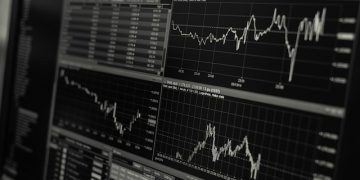Text size

The Chinese yuan has gained against the dollar. Above, a bus in Hong Kong.
ANTHONY WALLACE/AFP/Getty Images
Investors have recently favored emerging-market stocks over the those in the U.S. That is a reflection of their confidence in the global economy’s recovery, given that those stocks typically perform well when growth picks up steam.
A net $5.7 billion flowed into emerging-market stocks this week, according to Bank of America strategists. That marks the 19th week of “large inflows” in the past 20, according to Michael Hartnett, chief investment strategist at BofA. Meanwhile, U.S. stocks saw their largest net outflow—$7.3 billion—in the past six weeks.
Emerging-market stocks have outperformed U.S. stocks this week, a continuation of a trend seen since the start of 2021. The iShares MSCI Emerging Markets Exchange-Traded Fund (EEM) rose more than 5% for the week, while the
S&P 500
gained just over 4%.
These capital-flow and price moves reflect a global economy that is bouncing back from the pandemic. Covid-19 vaccine distributions are beginning to make it possible for businesses to reopen, while government spending in much of the world has kept cash levels high for households and small businesses.
The effect is that there is likely to be pent-up demand for the goods and services reopening business can offer. The knock-on effect could be a virtuous cycle of rehiring and increasing consumer spending.
Administrations of vaccinations have soared in the U.S., faster than in some other nations, but the globe at large is generally recovering from the pandemic. Gross domestic product in Asian emerging-market economies could grow 8.3% in 2021, according to the International Monetary Fund, while the U.S. economy is expected to grow around 5%.
Faster growth powers increased commodity demand—Brent crude oil, the main international benchmark, is up in the midteens in percentage terms year to date—which bodes well for emerging economies. Many are large commodity producers and are export-oriented, positioning them to benefit from global demand.
EM stocks tend to perform well when the dollar is falling, but the pattern is different for now. Both the dollar and EM stocks have strengthened of late, for good reason. The
U.S. Dollar Index
(DXY) is up 1.3% for the year.
The dollar usually weakens when the world sees strong economic activity, as global investors move out of safe assets, such as U.S. Treasury debt. But recently, even though the global economy’s prospects are improving, the longer-term outlook for the U.S. is getting better faster than for many other countries.
That lifts the dollar even though growth outside the U.S. is still expected to be strong.
Plus, the dollar index is heavily weighted against the euro, which has fallen against the greenback. The dollar has indeed fallen against some emerging-market currencies like the Chinese yuan and the Indian rupee. Those currencies’ gains are confirmation that growth is picking up in those countries.
And even if the dollar were to strengthen against EM currencies—a dynamic that would pressure demand for commodities, which are traded in dollars—the underlying demand spurred by reopening economies should prop up prices for goods such as oil, Anujeet Sareen, portfolio manager and global macro strategist for Brandywine Global told Barron’s.
Equities in emerging markets can certainly continue their strong performance. “If we continue to see the reinflation trade globally, we’ll probably see more flows in the EM direction,” Tony Bedikian, head of global markets at Citizens Bank, told Barron’s. Plus, EM stock valuations are reasonable, leaving room for upside, Citi strategists said recently.
The move into EM stocks may be cyclical, or based on a new economic expansion, rather than representing a structural trend that could last a decade. Sareen says the former is more likely.
The key to watch for EM stocks is global growth, driven by vaccines. Currencies are a secondary concern.
Write to Jacob Sonenshine at [email protected]




